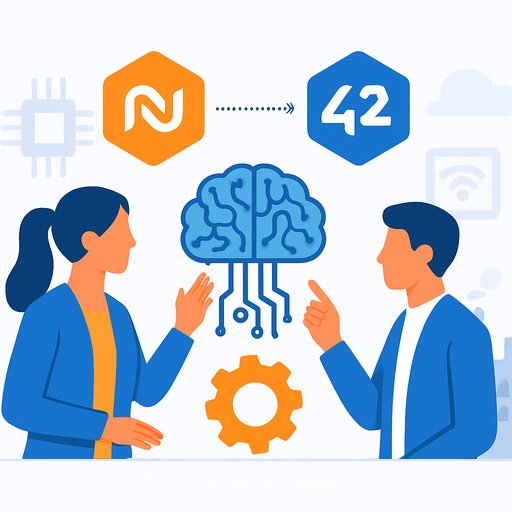Intel's Panther Lake on 18A: What Product Teams Need to Know
Intel introduced its Intel Core Ultra series 3 (code-named Panther Lake), the first client SoCs built on the Intel 18A node. High-volume production is scheduled at Fab 52 in Arizona later this year, with the first SKU shipping before year-end and broad availability starting January 2026.
For product leaders, this is a clear signal: a new x86 client platform with a multi-chiplet design, stronger on-device AI throughput, and a domestic manufacturing ramp that reduces risk for 2026 launches.
Why it matters for product development
- Predictable 2026 availability: plan design locks, EVT/DVT, and retail windows with more certainty.
- Higher compute density at similar or lower energy use enables slimmer thermals and longer battery targets.
- On-device AI throughput allows more private, low-latency features without cloud dependency.
- U.S.-based high-volume manufacturing adds resilience for supply and compliance needs.
Panther Lake highlights (Client, Intel Core Ultra series 3)
- Multi-chiplet architecture for flexible SKU mixes across thin-and-light, gaming, commercial, and edge designs.
- Up to 16 updated P-cores and E-cores; more than 50% faster CPU performance vs. prior generation. 2
- New Intel Arc GPU with up to 12 Xe cores; more than 50% faster graphics vs. prior generation. 3
- Balanced XPU with up to 180 Platform TOPS for next-level on-device AI workloads. 4
- Energy characteristics comparable to recent ultra-mobile platforms while targeting higher compute ceilings. 1
- Edge-ready: robotics reference board plus a Robotics AI software suite to accelerate prototyping.
- Schedule: high-volume production begins this year; first SKU before year-end; broad availability January 2026.
What to build next (practical guidance)
- Define AI feature sets that run locally within a 180 TOPS budget; split workloads across NPU, GPU, and CPU early in architecture.
- Model thermals for both burst and sustained AI use cases; reassess cooling, acoustics, and chassis constraints.
- Revisit graphics requirements: with the new Arc GPU uplift, some SKUs may avoid a discrete GPU while meeting targets.
- For edge/robotics, leverage the reference board and software stack to shorten bring-up and validation cycles.
- Align your accessory roadmap (memory, storage, Wi-Fi, camera, display) to support on-device AI scenarios such as live transcription, image generation, and offline copilots.
Clearwater Forest (Server, Intel Xeon 6+ on 18A)
- Up to 288 E-cores with a 17% IPC uplift vs. the prior generation.
- Focus on density, throughput, and energy efficiency for large-scale data centers, cloud, and telco.
- Planned launch in the first half of 2026; sync client and server refresh plans to streamline software and fleet upgrades.
Intel 18A: What's new at the node level
- First 2-nm-class process developed and manufactured in the U.S., targeting up to 15% better performance per watt and 30% higher chip density vs. Intel 3. 5
- RibbonFET for improved switching behavior and scaling; PowerVia for backside power delivery.
- Foveros 3D packaging integrates multiple chiplets for system-level flexibility and performance.
Manufacturing and supply chain notes
- Fab 52 in Chandler, Arizona is fully operational and ramping to high-volume production on Intel 18A this year.
- Part of a broader U.S. manufacturing footprint alongside R&D in Oregon and packaging in New Mexico.
- Implication: increased domestic capacity for client and server programs, plus optionality for foundry customers.
Action checklist for product teams
- Kick off platform evaluations and thermal/motherboard feasibility for Panther Lake SKUs slated for early 2026 availability.
- Prototype AI features with quantization and operator choices that align to NPU/GPU strengths on the platform.
- Plan SKU segmentation: thin-and-light vs. creator/gaming vs. commercial manageability, using the multi-chiplet flexibility.
- For server leads, begin capacity and TCO modeling for Xeon 6+ ahead of H1 2026.
Notes and references: For performance claims and test conditions, see Intel's documentation. Results may vary. intel.com/performanceindex
Upskill your team for on-device AI
If you're aligning 2026 products to local AI features, accelerate your team's capability with focused training. Explore role-based AI learning paths here: Complete AI Training: Courses by Job
Your membership also unlocks:






